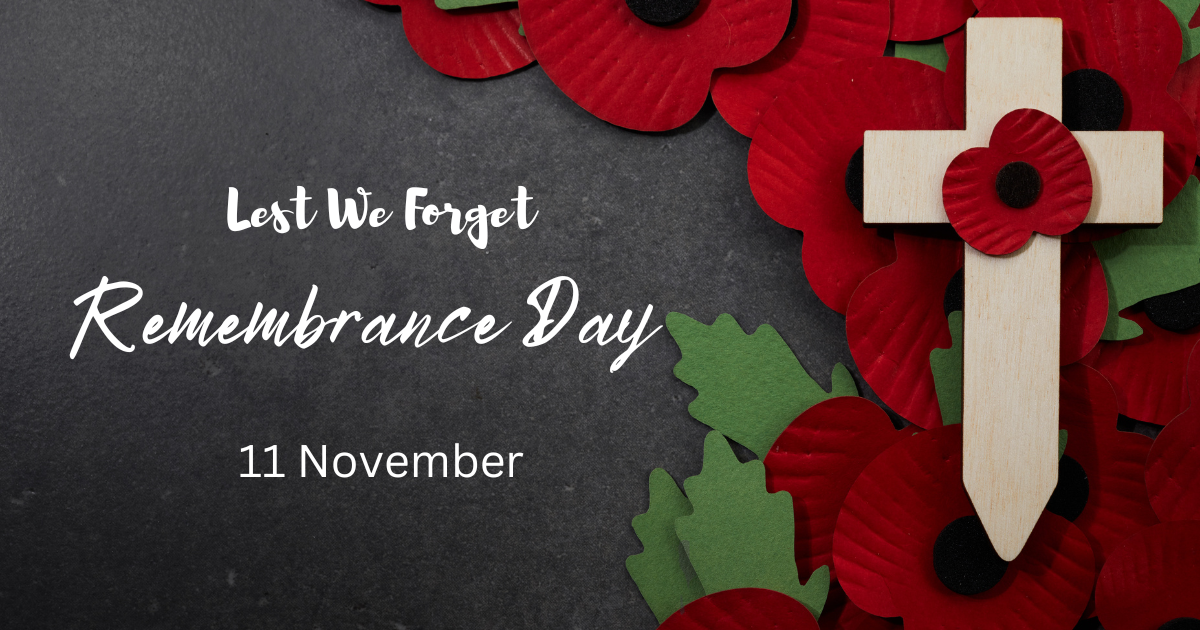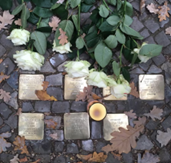Symbols can transcend words, stories, beliefs, and emotions. Across the world, these symbols—though shaped by distinct historical and cultural backgrounds—all convey a common language of peace, respect, and remembrance. From the familiar Red Poppy to Japan’s Peace Crane, each holds a unique place in honouring those lost to war and adversity. In particular, translating iconic works like “In Flanders Fields” into different languages shows that, despite language barriers, the spirit of peace and reflection can be universally understood.
Red Poppy: The Commonwealth’s Symbol of Remembrance
The Red Poppy, now a globally recognized emblem, has its roots in the desolate fields of Flanders, Belgium, where poppies bloomed amidst the ravages of World War I. Its connection to the famous poem In Flanders Fields by Lieutenant Colonel John McCrae helped it become a powerful symbol in Commonwealth countries, especially on Remembrance Day. The poem’s lines, “In Flanders fields, the poppies blow / Between the crosses, row on row,” capture the beauty and tragedy of the lives lost on the battlefield.
For many, wearing the poppy is an act of respect, symbolizing both the bloodshed and resilience of soldiers. Though the power of this symbol goes beyond literal translation; its imagery and significance speak to people universally.
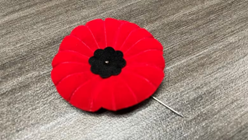
Source: CBC
Bleuet de France: A French Tribute to Resilience and Recovery
In France, the Bleuet de France, or the Cornflower, serves a role like the Red Poppy but has its own origins in the resilience of those affected by war. In the 1920s, war veterans recovering from their injuries created cornflower badges to support themselves, and the practice eventually grew into a nationwide emblem of remembrance.
The Cornflower became a unique metaphor for both youth and recovery—qualities that represent the strength and hope of soldiers, many of whom were young when they went to battle. The cornflower’s blue colour also aligns with France’s national colours, adding a patriotic layer to its meaning. Like the Red Poppy, it reflects the visual interpretation, speaking to universal themes of honour and resilience.
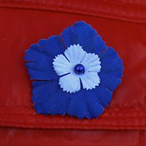
Source: Wikipedia
Japan’s Peace Crane: A Symbol of Hope and Reconciliation
The origami crane, an ancient symbol of peace and good fortune, took on a new layer of meaning in the aftermath of the atomic bombings of Hiroshima and Nagasaki. Inspired by the story of Sadako Sasaki, a young girl who attempted to fold a thousand cranes as a prayer for recovery from radiation sickness, the Peace Crane became a global symbol for the wish to end war and pursue peace.
Today, millions of cranes are folded annually by people worldwide, commemorating those lost to war and advocating for a world without nuclear weapons. The Peace Crane’s story and meaning remind us that symbols do not always need direct visual connections to warfare to convey the universal longing for peace and remembrance.
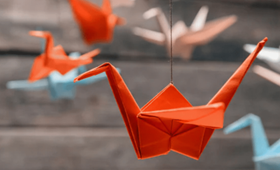
Source: Shrine of Remembrance
Translation of “In Flanders Fields”
When translating poetry—particularly pieces as iconic as In Flanders Fields—the challenge lies not just in converting words from one language to another but in capturing the tone and emotional resonance. Each line of McCrae’s poem, which has been translated into many languages, must retain its delicate balance of sorrow, pride, and a call to remembrance.
A literal translation risks losing some of the poem’s rhythmic and emotional qualities. For instance, in translating “In Flanders fields, the poppies blow,” a translator might grapple with the most evocative word choices for “blow,” given that the original English phrase carries a dual meaning of movement and gentle presence.
Global Symbols of Remembrance
Even when specific to one country or culture, these symbols resonate with people worldwide due to their universal themes of loss, hope, and resilience. Here are some additional symbols from various countries:
White Poppy (UK and Canada): Representing peace without violence, the white poppy emerged as an alternative to the red poppy, advocating for peaceful resolution of conflicts. Although not as widely embraced as the red poppy, it encourages reflection on the desire to prevent future wars.
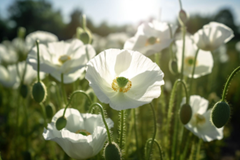
Source: Canadian Voice of Women for Peace
Stolpersteine (Germany and Europe): These “stumbling stones,” small brass plates embedded in sidewalks, mark the last known residences of Holocaust victims.
Source: The Guardian
Forget-Me-Not Flower (Armenia): Used to remember the victims of the Armenian genocide, this flower represents the enduring spirit and memory of those who suffered.
Source: Wikipedia
The Power of Symbols: Beyond Words and Borders
While language is important to how we communicate, symbols offer a different mode of expression. The Red Poppy, Bleuet de France, Peace Crane, and others demonstrate that the essence of remembrance does not need to be verbally explained.
Symbols are visual translations of core values that cultures worldwide hold: honouring those who have come before us, acknowledging the pain and loss of war, and cherishing hope for a more peaceful future.
As we encounter these emblems—whether wearing a poppy on Remembrance Day or folding a Peace Crane for Hiroshima—we participate in a universal remembrance that reminds us of our shared humanity and the importance of working toward a peaceful world.

